The Department of Health and Human Services proposed these changes to the Mandatory Guidelines for Federal Workplace Drug Testing Programs in April of 2022, asking for all public comments to be submitted by June. The Transportation Trades Department AFL-CIO (TTD), made their response public.
The main concern over the proposed changes is its potential to negatively affect the hiring process for many transportation workers. Here are some of the proposed changes causing controversy among the Transportation Industry Trade Unions and how it could impact your workforce as well.
No Shows Count As Positive
Should a candidate fail to show up for a scheduled drug test, that failure could eventually be marked as a positive result, affecting the employee’s ability to get any new job or even return to a current position within the transportation industry. An applicant's refusal to even wash their hands during the testing procedure could also be reported as a refusal to test.
According to Sections 1.7, “The collector will report a refusal to test for any donor who fails to appear in a reasonable time or who leaves the collection site before the collection is complete, regardless of the reason for the test.”
New Testing Options:
Subpart B—Oral Fluid Specimens
Section 2.1 What type of specimen may be collected?
Another proposed change is allowing oral fluid testing to be added to federal guidelines. Currently government testing guidelines call for urinalysis. These new guidelines could be an attempt to make government guidelines competitive to those already being utilized by private sector employers. Workplace Safety Screenings provides a variety of testing options to private employers to choose the method that best suits their needs.
Changes to Testing Threshold
The Department proposes to reword this policy, now in item ii of Section 13.5(c)(2), to clarify that the policy applies to any positive oral fluid drug test results, not just marijuana, with the exception of positive codeine and morphine results less than 150 ng/mL as described in Section 13.5(d).
Other concerns to proposed changes is lowering of standards of what constitutes a positive test which could go on to include foods and “products containing marijuana.” These changes would elevate the threat of CBD creams, oils and orals registering as a positive test result.
There are also changes in the results showing codeine or morphine use.
“When a donor has no legitimate medical explanation for a positive codeine or morphine result less than 150 ng/mL, the MRO must determine that there is clinical evidence of illegal opioid use (in addition to the test results) to report such specimens as positive.”
Changes to Public Commenting
The new HHS proposal also seeks to do away with public commenting on new proposals. This particular proposal received very clear feedback from TTD which “consists of 37 affiliate Unions from all across all modes of transportation.” They clearly have opinions on how these proposed guidelines will affect their ability to hire good employees.
According to the TTD opposition statement. “The history of drug testing programs consistently shows that robust public participation is a key factor in creating good policy and regulation. This is particularly applicable to drug testing programs, which can have drastic consequences for workers’ careers and livelihoods. Providing an opportunity for public comment on all changes to drug testing panels is the bare minimum requirement to ensure that workers are adequately informed of proposed changes and have an opportunity to make their voices heard.”
Would eliminating public commenting on proposed changes from HHS serve the public’s best interest or that of federal employees? Would it make the public more or less safe?
To make sure that your drug testing program stays in compliance with all current and future Federal regulations, contact Workplace Safety Screenings. We can help you meet and exceed all testing requirements as part of a comprehensive workplace safety program.

.png?width=500&height=500&name=Blue%20and%20White%20Classic%20Shield%20Financial%20with%20Star%20Logo%20Design%20(1).png)


